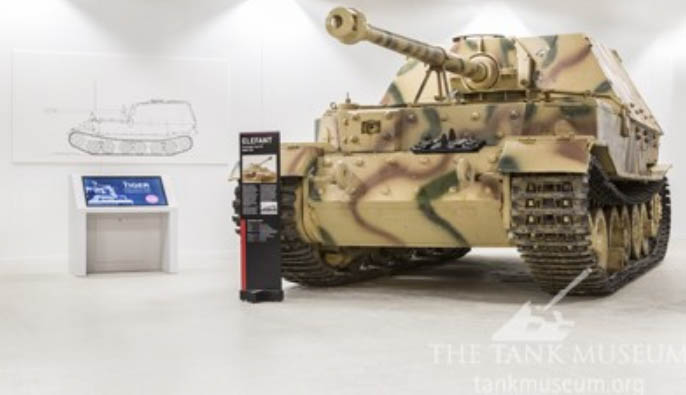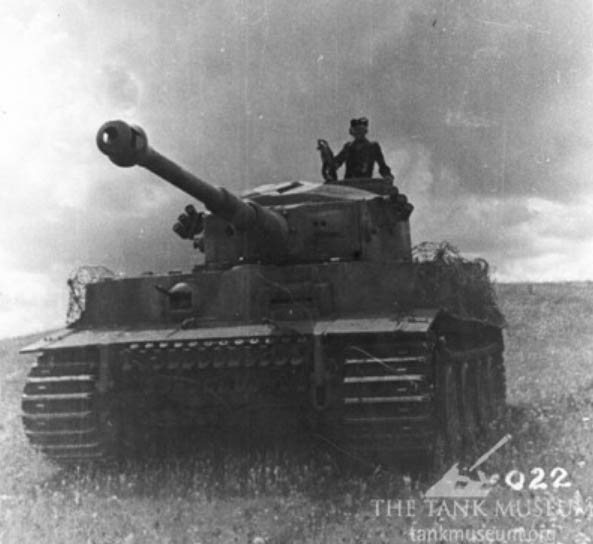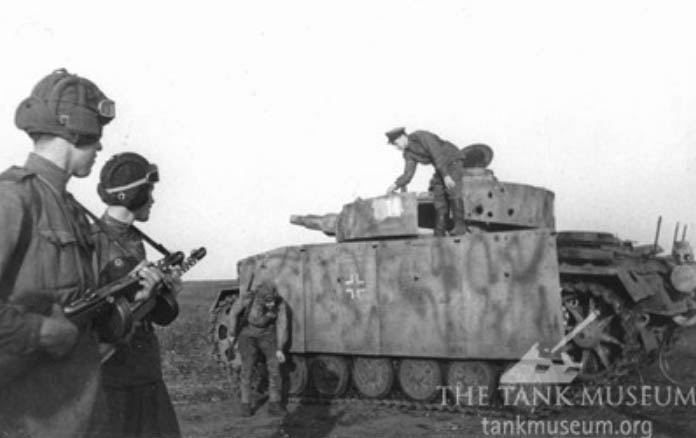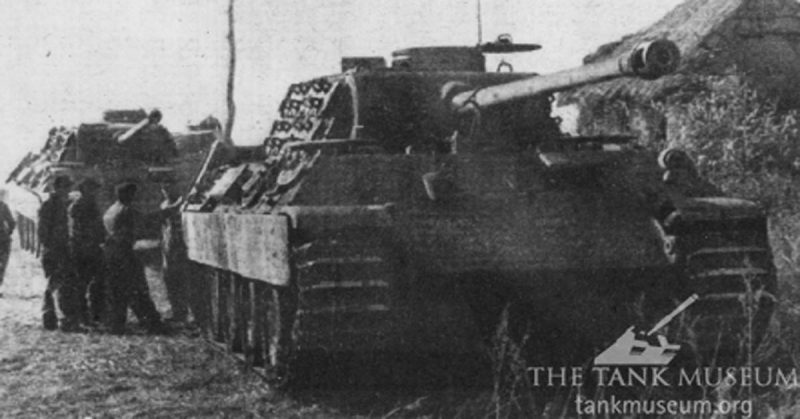The attacking German forces at Kursk amassed 777,000 men and around 2500 tanks and assault guns. This was about 70 per cent of all their tanks on the Eastern Front.The Battle of Kursk is widely believed to have been the largest tank battle in history. In fact recent research has suggested that there were larger tank battles in 1941, and that the fighting at Prokhorovka involved fewer tanks than previously thought, but this shouldn’t take anything away from Kursk’s scale and importance.
There are examples of most of the tanks that fought at Kursk on display at The Tank Museum. This article will take a look at some of the German tanks used in the battle.
A Veteran of the Battle
The Elefant on display in the Tiger Collection actually fought at Kursk. It was issued to Heavy Tank Destroyer Battalion 654 in May 1943. The third vehicle in 3rd Platoon, 6thCompany, its tactical number at Kursk was 633. At the time it was known as a Ferdinand. It fought in the North, around Ponyri and Maloarchangelsk.
Ferdinands proved to be formidable opponents, as their powerful guns could destroy Soviet vehicles at long range. At Kursk they were used as a slow-moving battering ram, relying on their thick armour for protection as they advanced.

However, Ferdinands proved vulnerable to close range attack from infantry as the gun had limited traverse and it wasn’t fitted with any machine guns (they were added later). It also proved to be unreliable and many that were damaged or broke down couldn’t be recovered as they were just too heavy.
Of the 90 produced, just 50 survived Kursk and returned to Germany at the end of August. In return however Ferdinand crews claimed the destruction of 502 Soviet tanks.
The German Tanks
Another member of the Tiger family was used at Kursk, the Tiger I. Most were assigned to Heavy Tank Battalions that were attached to other units for support as needed. There were 2 of these at Kursk, as well as 4 Companies that were permanently part of their Division, for a total of 146 Tigers, a very small proportion of overall German tank strength.

The Tiger’s powerful long range firepower and thick armour meant it was ideally suited to forming the spearhead of German attacks. Indeed this was the basis of the tactic known as the Panzerkeil, or Tank Wedge. It placed Tigers at the front of the attack, meaning they would endure the bulk of Soviet anti-tank firepower instead of the more vulnerable Panzer IIIs and IVs.
The Panzer III and Panzer IV formed the bulk of German tank strength at Kursk.
The Panzer III was clearly obsolete by this point, with both armour and firepower inadequate against Soviet vehicles, but they were still common and 668 took part in the battle.
The Panzer IV had a much more capable 75mm gun and thicker armour, and was overall a good match for the T-34. There were 702 at Kursk.
Combat Debut
Kursk marked the first combat use of the new Panther medium tank. This had been designed in response to German encounters with the T-34 in 1941, and along with the Tiger and the Ferdinand, Hitler had huge confidence in the battle-winning potential of the new weapon.
Panther had comparable firepower and frontal protection to the Tiger, but it was far more mobile, as well as being easier and cheaper to produce. It was intended to replace the Panzer III and IV, but at Kursk only 200 were available.

The Panther was rushed into service before all its teething troubles had been resolved. The tanks used at Kursk suffered from mechanical breakdowns and their crews had limited training time, affecting their confidence in the vehicle.
The heavy weight of Tigers and Panthers posed a problem for German logistics. Previously only needing to move tanks weighing less than 30 tons, they now had to deal with 45 and 57 ton machines. New railway wagons, bridging equipment and recovery vehicles would all be needed.
Assault Guns
A large proportion of German armoured strength at Kursk was made up of assault guns, primarily the StuG III. Originally designed as an infantry support vehicle, by 1943 it had been fitted with the same 75mm gun as the Panzer IV, making it an effective anti-tank weapon. The lack of a complicated, expensive turret meant StuGs were quicker and cheaper to produce than tanks, however they were less flexible, especially on the attack. 466 were present at Kursk. Around 100 StuH 42 and Sturmpanzer IV vehicles armed with howitzers for infantry support were also present.
Although these are enormous numbers, it’s important to remember that the Kursk battlefield extended over hundreds of square miles, and the German attack was split between the Northern and Southern fronts. These tanks were never all in the same place at the same time.
A message from The Tank Museum:
“Please Support Us: As a charity, we rely on public support for all our activities. Our work is funded entirely by people like you. With your support, we can continue to create content. With the right support we might be able to do it more regularly – and can be even more ambitious. Please Click on the Banner Below.”
Thanks to the Tank Museum for this Blog, which originally appeared here.

